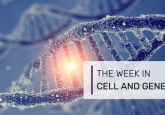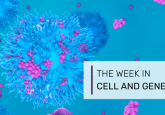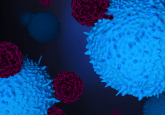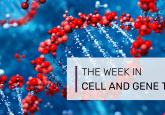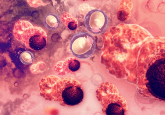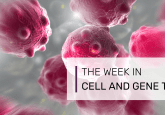Funding for novel CAR-T cell therapy advances regenerative blood cancer treatment

US$4.1 million has been awarded to researchers at the University of California San Diego School of Medicine (CA, USA) to aid the development of their novel chimeric antigen receptor (CAR-T) cell therapy. The grant, approved by the California Institute for Regenerative Medicine (CIRM; CA, USA) governing board, could help the team bring this new cancer therapy from bench to bedside.
Previously the team developed CAR-T cells that target ROR1, a molecule involved in tumor growth which is found on the surface of many cancer cells. Using the patient’s own engineered T-cells, this therapy is particularly effective against blood cancers such as chronic lymphocytic leukemia, mantle cell lymphoma, and acute lymphoblastic leukemia – due to their heightened ROR1 activity.
The CIRM funded project also utilizes ROR1 targeted CAR-T cells – this time combining a portion of cirmtuzumab, an experimental ROR1-targeted monoclonal antibody-based drug, to help it selectively kill blood cancer cells.
You might also like:
“This really has the potential to provide a meaningful therapy to many patients with blood cancers that are resistant to standard chemotherapies, have few therapeutic options and dire prognoses,” commented Ezra Cohen, professor at UC San Diego School of Medicine, Associate Director for Clinical Science and Chief of the Division of Hematology-Oncology at Moores Cancer Center at UC San Diego Health. “These patients represent a tremendous, global unmet medical need.”
The funding will allow the team to launch clinical trials, and eventually expand their approach to target difficult-to-treat solid tumors which also produce ROR1, such as head and neck cancers, triple-negative breast cancer and pancreatic cancer.
“CAR-T cell therapies represent a transformational advance in the treatment of hematologic malignancies,” concluded Maria T Millan, CIRM President and CEO. “This approach addresses the need to develop new therapies for patients whose cancers are resistant to standard chemotherapies, who have few therapeutic options and a very poor chance of recovery.
“Our goal is to always move the most promising research forward as fast as we can. That’s why these programs are so important. They reflect potential therapeutic approaches that have shown promise in the lab and are ready to take the next step, to undergo further testing and examination to see if they might be able to work in patients.”
